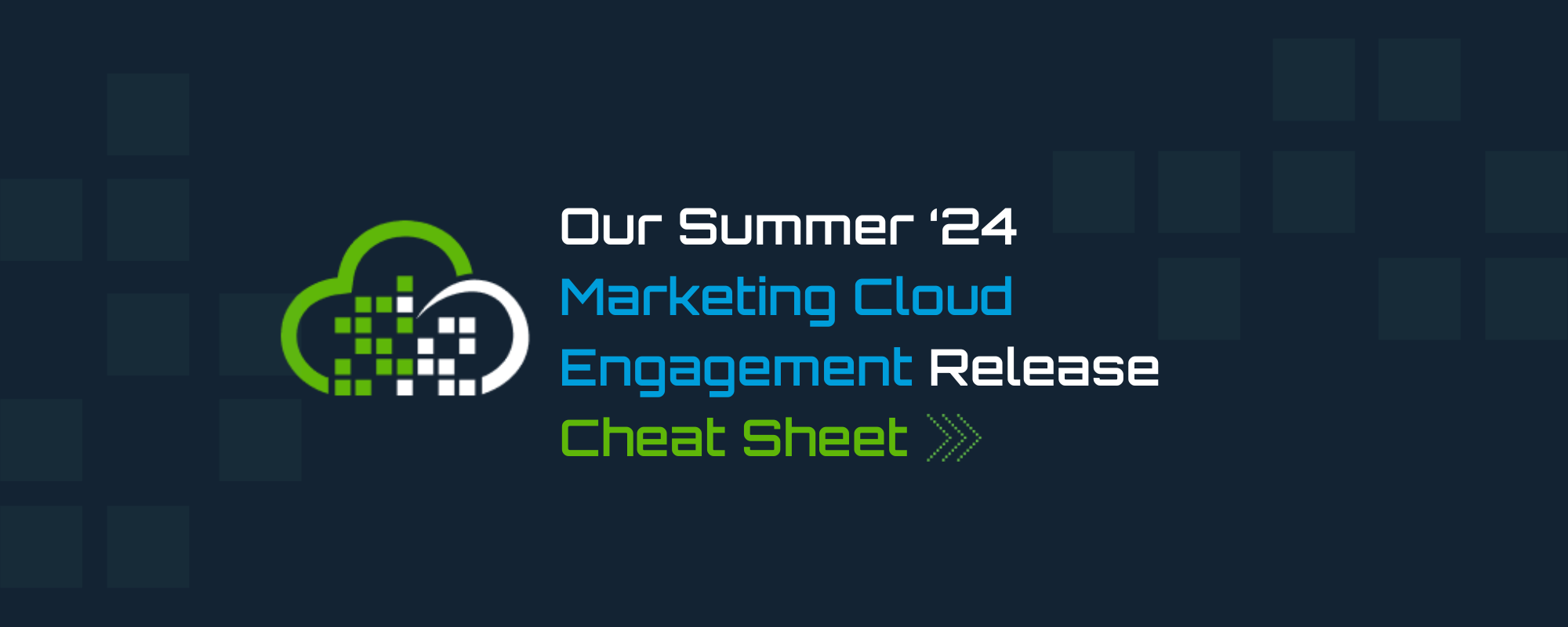Our Summer ‘24 Marketing Cloud Engagement Release Cheat Sheet
Justin Kasbohm – June 7, 2024

The Salesforce Summer ‘24 Marketing Cloud Engagement release is really quite unique! Usually, there are very generic and hard-to-notice updates, fixes, or additions, this go-around we have many smaller but visible changes!
Of course, some are more significant than others, and today we're going to focus on those. In no particular order, here are a handful of release notes to watch for as they're rolled out starting June 7, 2024 through June 28, 2024:
1. App, Setup, and Security:
Here we have some helpful changes for those interested in the Marketing Cloud SFTP and Automation Studio! They're adding more permissions that you can set for your FTP users in order to give them different levels of access (e.g., view, edit, download, upload).
In Automation Studio, there is going to be a new History tab where you can view your automations over time and improve your overall automation health. Additionally, a new feature called Start-Time Scheduling Recommendations can help you distribute your automations' schedules across times that aren't just on the (:00) or the (:30) of the hour so that the system doesn't experience such significant traffic at those times. Last but certainly not least, they changed the minimum interval for scheduled automations to 15 minutes (you used to only be able to run automations every hour at most)!
2. Developers:
A very popular AMPscript function, RetrieveSalesforceObjects(), now has a limit on the rowset it returns. 1,000 rows is the new max, whereas previously there was no limit. This could be a potentially significant change to watch out for, and we recommend scanning your back-end AMPscript and reviewing any code blocks where the RetrieveSalesforceObjects() function is used to make sure everything will work correctly. Moving on, they've greatly improved some of their documentation and added more support for managing data extensions with new REST API endpoints and documentation. Now you can query, create, and modify data extensions without SOAP!
3. Journeys:
Soon you'll be able to set the priority level in Journey Builder for journeys that use shared system resources! Let's say you have two ongoing journeys that each reference the same data extension at some point, you could set a higher priority for the more important journey, and the other journey will do its processing once the resource is freed up. In a similar vein, High-Throughout Sending for Journey Builder was announced in a recent release, and they are continuing to improve the feature this summer.
4. Messaging:
Jumping into some SMS and push notification updates, you can now secure and use a custom domain in your shortened SMS links! No need for everything to look like a bit.ly link.
Also, they added the MobilePush Diagnostic Tool, a tool that helps you check your push notification app setup and troubleshoot issues related to device registration and contact opt-ins.
A couple of updates to the MobilePush SDK, they greatly improved their documentation for it, and they added a privacy manifest file to the newest SDK versions to comply with recent Apple Privacy Regulation changes with iOS 17. Last but not least, they offer a final reminder that the authentication pattern for Android push notification applications changed on June 1, 2024. If they haven’t already, make sure your admins upload the google-services.json file from Firebase to MobilePush immediately.
If you’re looking for assistance with the changes with this release - let us know! Our team of Marketing Cloud experts are ready to turn your Marketing Cloud instance into a powerhouse of lead generation.